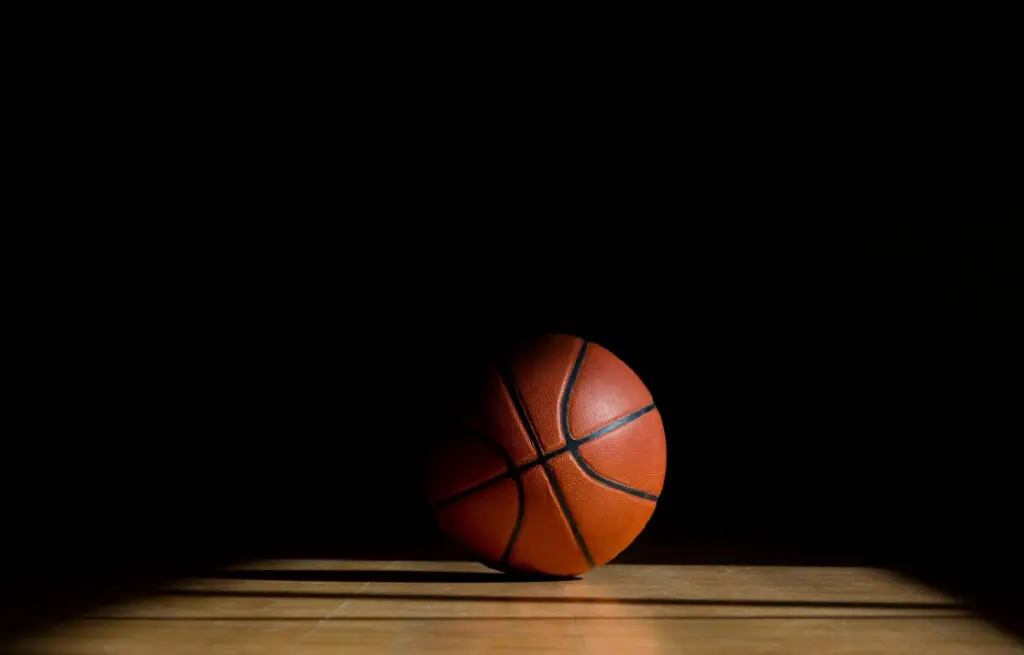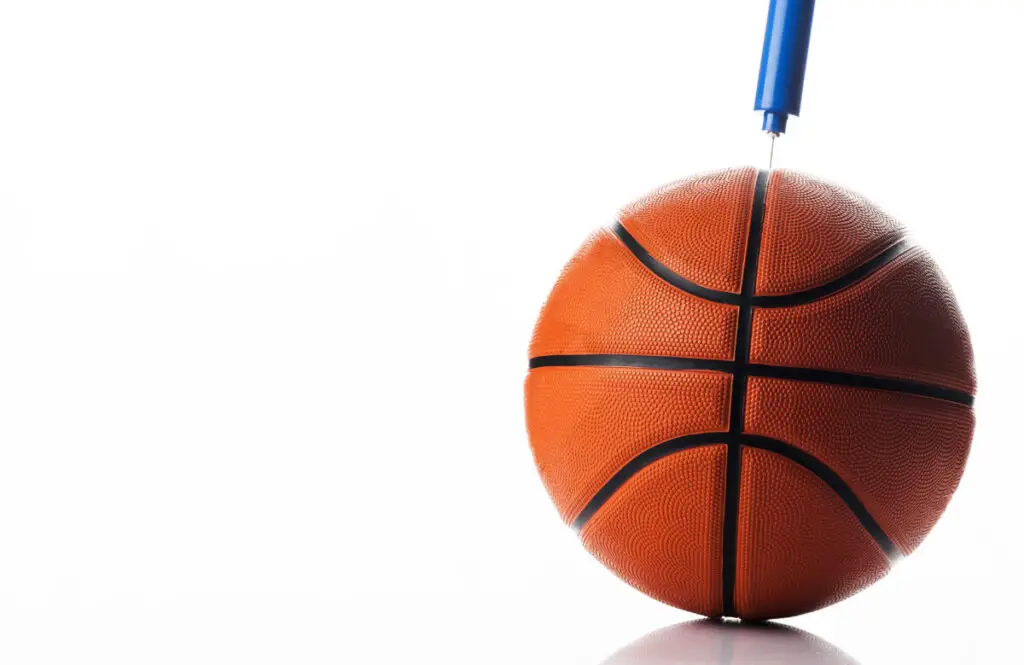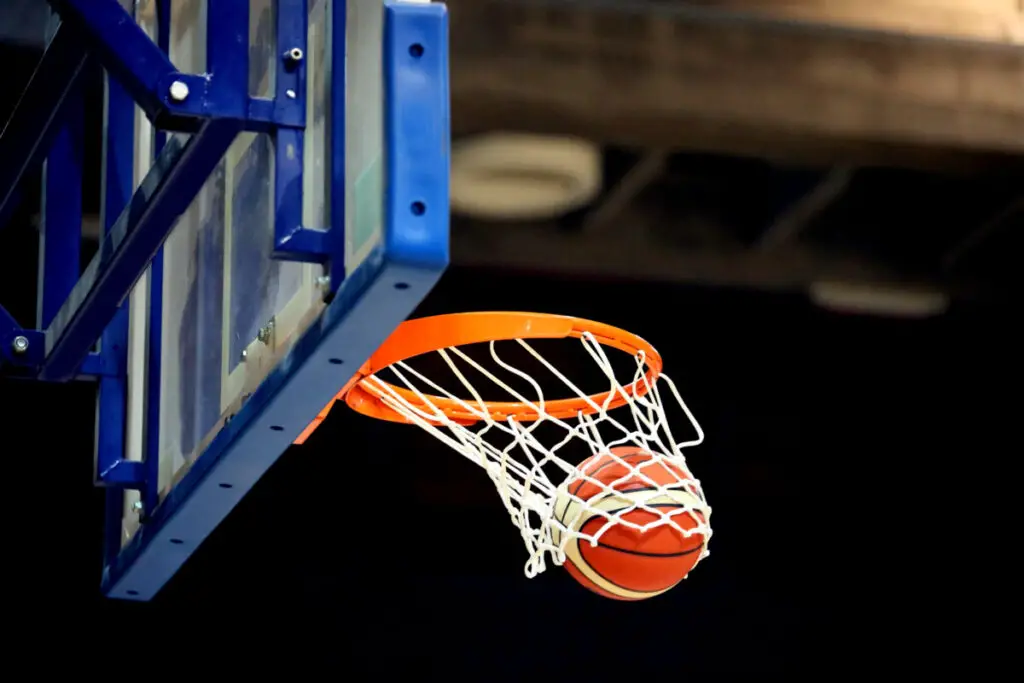
It can be frustrating to work with a constantly flat ball in sports, whether that be soccer, tennis, volleyball, or basketball. If you are familiar with the sport of basketball and the ball that you use for this game, you know that caring for the ball is relatively straightforward and simple. However, if they are cared for improperly, basketballs can develop issues and become difficult to use.
Although there can be several reasons that a basketball constantly deflates, the most common problem is because the ball has a leak in its inner lining or its outer shell. Cold weather, improper usage, and incorrect deflating methods can all attribute to the basketball deflating as well.
Luckily, each of these issues has a simple and easy fix that will help you fix the problem and prevent your ball from deflating in the future. Along with those benefits, unless you are made of money, it is important to learn how to care for your basketball so that you are not constantly buying new ones, which can become an expensive habit.
Leaks
Leaks in your basketball can be caused by several different things, but it is most likely that the valve has something prohibiting it from sealing all the way, making it easy for air to escape. In order to clean out the valve, you can put a bit of soap and water on the top of the needle used to pump up the basketball and slide it back and forth a few times to hopefully clean out the valve. It is also good practice to get the needle wet before you insert it into your basketball to pump it up, as this will help prevent the needle from breaking off inside the ball and help keep the valve clean.
If this method of cleaning the valve doesn’t fix the problem, you can stick a toothpick into the valve hole and break it off, plugging the hole and preventing any more leaks. However, is important to note that this method can make it difficult to pump up the ball in the future.
Depending on the kind of basketball that you own, the ball can also suffer from a leak due to a sharp object puncturing the outer shell or overinflating the ball and causing it to rupture. In this case, it is easy to patch up the ball with a bicycle repair kit, a hot knife, or a ball repair sealant.

Weather
Cold weather actually has more of an impact on your basketball than you would think. The air pressure inside of the basketball is where the ball gets its energy to bounce from, which is why you keep the ball inflated properly. However, when it gets cold outside, the air pressure becomes reduced. The air molecules inside the basketball have less energy when it is cold outside, making the basketball deflated at a colder temperature, even though it was inflated perfectly at a warmer temperature.
This won’t necessarily cause issues for your basketball, but it may cause it to get worn down more quickly since you have to be constantly inflating it. It is a good idea to keep your basketballs somewhere warm rather than in a cold garage during the winter, which will make less work for you and a longer life for the basketball.
Types of Basketballs
The material that your basketball is made out of will have a big impact on how quickly your ball deflates, especially if you are using a ball meant for an indoor court and playing with it on a concrete pad, such as your driveway. Learning the difference between each ball type will save you a lot of headache and time spent inflating your ball before your next pickup game.
Leather balls are what professionals use in their games. These are high-quality balls meant for indoor court use only and can quickly get worn out if used outside. Leather balls are more prone to seam leaks, which can stem from overinflation and being worn out from use. These are the most difficult kind of leaks to repair, as they can only be fixed by a professional with special thread used to sew the balls together. Rubber and composite balls do not have seams, making this a problem solely for leather balls.
However, leather balls are less likely to suffer from small holes and tears because of their thick outer shell as well as their internal inflation bag. This bag, or bladder, keeps the ball inflated even if there is a small tear or hole in the ball itself.

Rubber balls are made for outdoor courts and for playing outdoors. They are generally more bouncy than a standard leather ball and can be good for beginners because of their bounce. These balls can scuff up an indoor court if used inside, so it’s a good idea to keep them as solely outside balls.
Composite balls can be used both inside and outside, although it is a good idea to keep them as one or the other. These balls are the most durable out of the three kinds, making them easy to use and maintain. (Source)
Conclusion
Obviously, some issues with your ball, such as holes big enough to stick your finger through, cannot be fixed and mean that your ball needs to be replaced. There are a few no-brainers in keeping your ball in good condition, such as not kicking it around or using it for other purposes than playing basketball, as this will also cause it to deflate more quickly. Getting the ball wet can shorten its life, especially with leather balls, causing them to deteriorate in general, not just deflate. If you want to know what to do if your ball got wet, check our article “What Happens if a Basketball Gets Wet?“.
If you need to deflate your ball, you can simply put the pump needle into the valve and allow the air to escape, although generally, you won’t need to deflate your ball, as it happens naturally from playing. However, as you have hopefully been able to gather from this article, it is easy to repair and fix the issue of deflation in your basketball all by yourself, preserving your ball life and your wallet.
